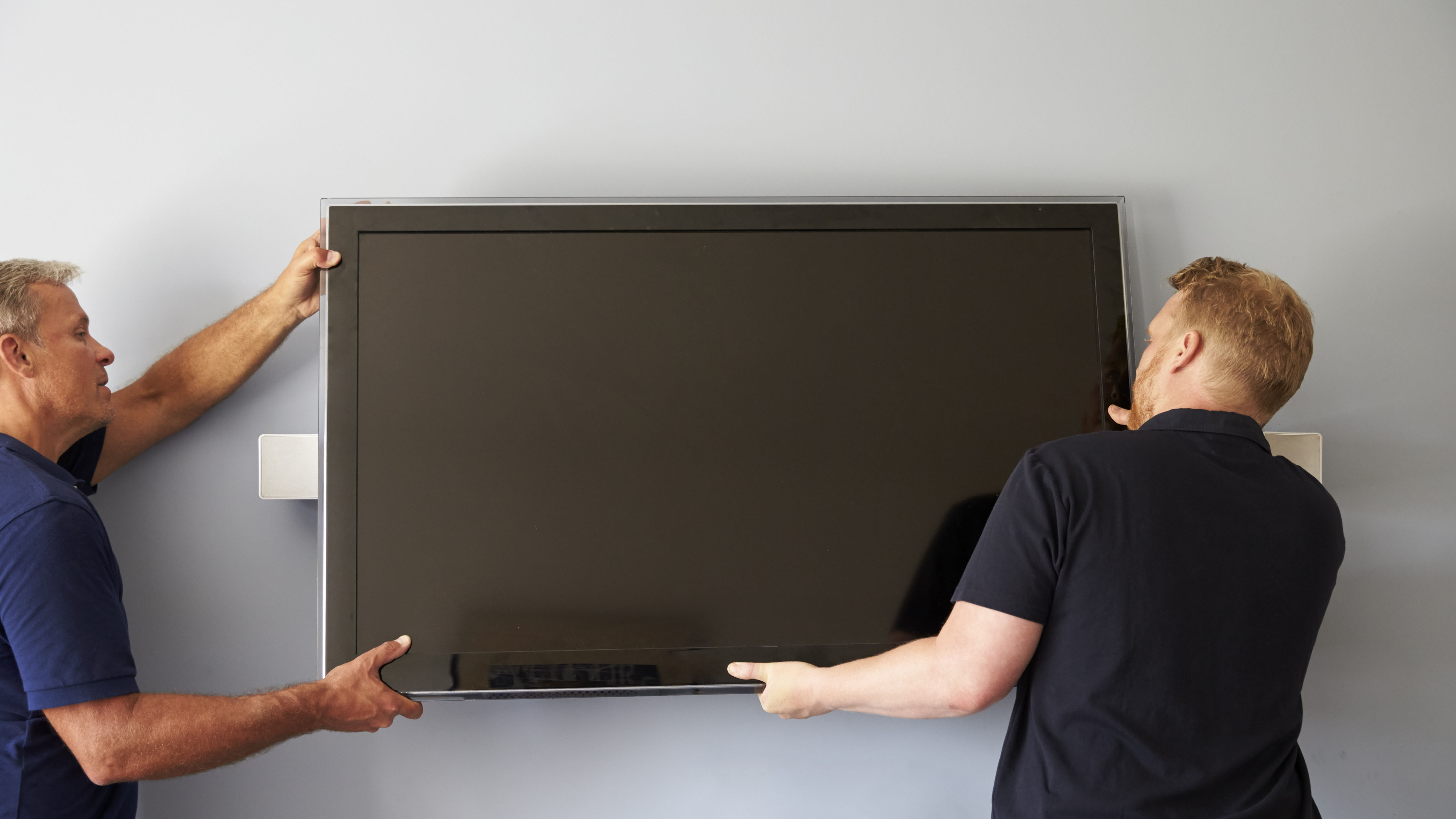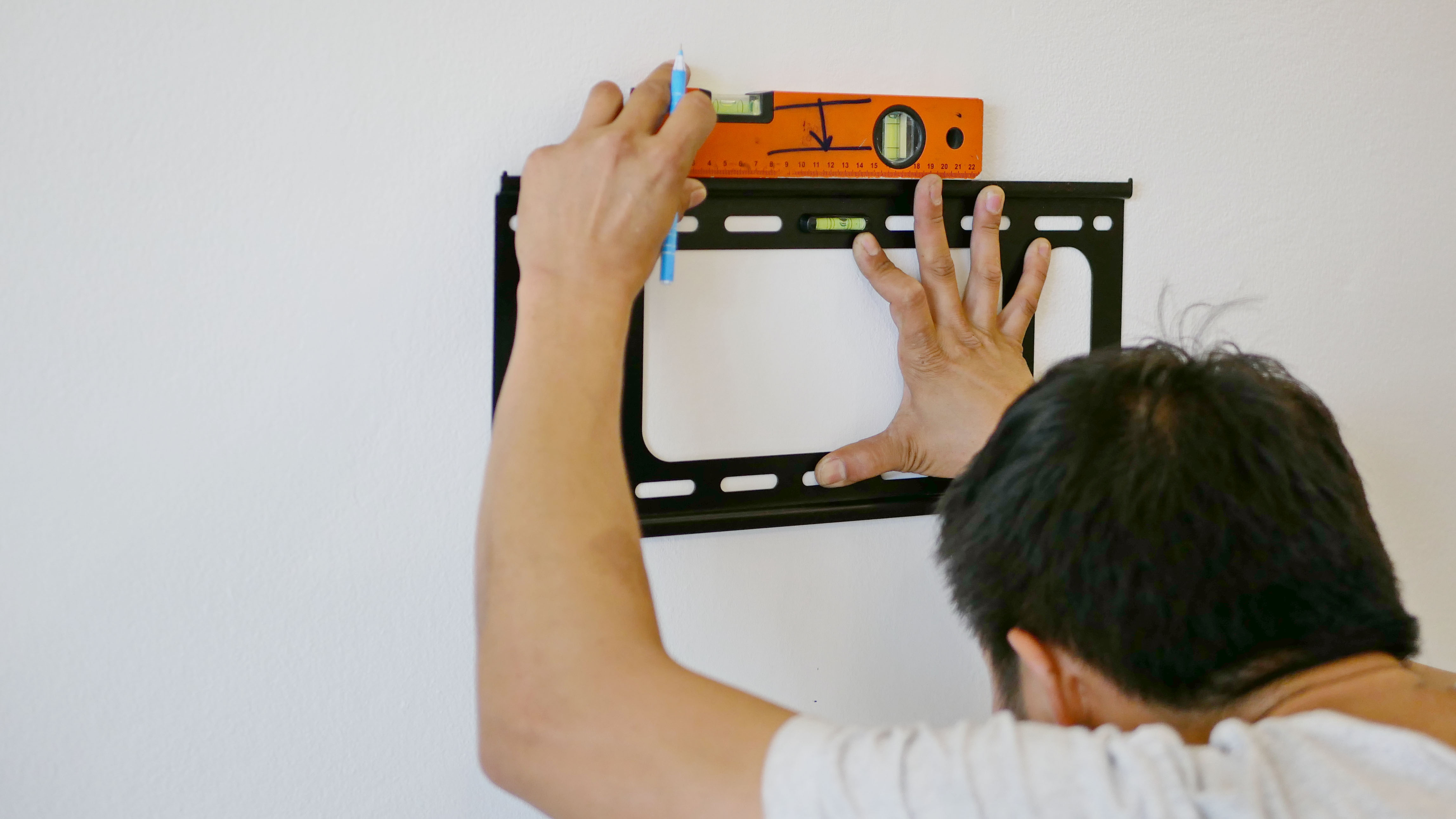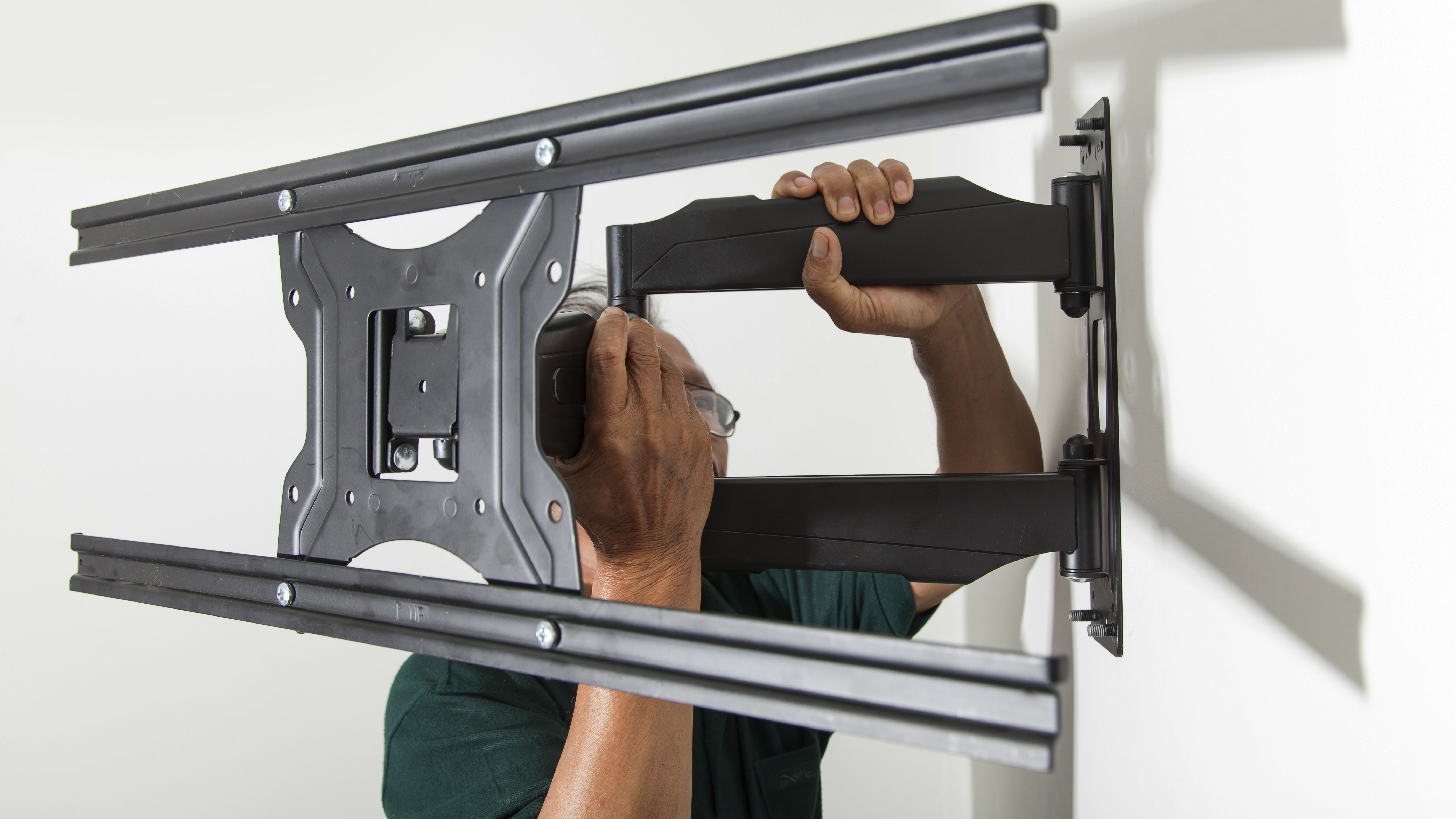How to wall-mount your TV: a step by step guide
The DIY way

Chances are, your new TV screen is the biggest you’ve ever owned. The room you’ll be watching it in may be the same size as it ever was, though – so how best to position it? Wall-mounting is the obvious answer: it stops the TV occupying any floor- or shelf-space, keeping it well out of your way and ensuring you still have space for all your furniture. In the case of many TVs, like Samsung’s The Frame, it may simply look better on the wall anyway!
Wall-mounting your TV correctly, though, is the real trick. How do you wall-mount a TV so that it looks tidy, stays secure, and doesn't have a dozen visible cables trailing from it? By reading on, that’s how. Below we’ve explained the best way to get your TV up on the wall – and to make sure it stays there.
What you’ll need (apart from a TV)
First things first: make sure you’ve the necessary equipment to get that nice new (and doubtless expensive) television onto your wall. You’ll need to have most, if not all, of these things to hand:
- Power drill, with the relevant drill bits. If you’re wall-mounting an especially large or heavy TV, it’ll almost certainly need to go on a solid wall, so masonry drill bits will be required.
- Stud finder. if you’re mounting onto a hollow wall, use your stud finder to locate the wooden studs that support it - you’ll need to make sure this is where your wall-mount is bolted. A stud finder should also help locate any pipes and/or wiring in a hollow wall.
- Tape measure – because you want to make sure the screen sits exactly where you want it to.
- Spirit level. Some brackets have them built in, but if yours doesn’t you’ll need a way to make sure your mount is level.
- Screwdriver, to attach the mount to the back of the screen. No worthwhile DIY ever took place without a screwdriver being involved.

What sort of wall-mount do you need?
Once you’ve got your tools together, you’ll need to buy the wall-mount itself. Occasionally new TVs are supplied with wall-mounts (LG’s swish new GX OLED series, for example), but in the vast majority of cases you’ll need to buy one separately. There are lots of different options for the best TV wall mounts out there, so here's what you'll need to think about.
You’ll have to choose between a few different mounting options. There’s ‘fixed’, which mounts the TV flush to the wall, with no gap and no movement of the screen. ‘Tilt’ mounts, on the other hand, allow a few degrees of up or down movement, all the better to fire pictures straight at your seating position.
Lastly, there’s ‘motion’, which allows the screen to move on an arm to angle itself more fully towards the viewer – very handy if your room tends to get a lot of natural light and you want to avoid reflection from the screen.

What is VESA? Why is it important?
It’s important to make sure your preferred wall-mount is compatible with your TV. VESA (Video Electronics Standards Association) established a reliable and widely-used mounting standard, and VESA mounts have measurements that indicate whether the holes in the mount will line up with the holes on the back of your TV.
Sign up for breaking news, reviews, opinion, top tech deals, and more.
Just measure the distance (in millimetres) between the horizontal holes and vertical holes on the back of your TV. These two figures are your VESA dimensions, and they’re also (probably) in your TV’s manual.
Next, establish that your mount is rated to bear the necessary load. Just because its screw-holes line-up in the VESA-approved manner, it doesn’t automatically follow that the mount can bear the weight of your new TV. Some new TVs, especially the really big screen-sizes, can weigh comfortably more than 30kg – so you need to make sure your mount is up to the task.

Where is your new TV going? And where will its cables go?
Before embarking on any drilling, decide where you want your TV to go. The box it came in is ideal for creating a template, so measure the screen and make a cut-out of that size. Then you’re not only able to decide where your TV should go, but you can mark where its corners will be and where the mount needs to go too.
Next, you’ll need to consider what to do with your cables. At a bare minimum, your TV is going to require two cables running to/from it – one for mains power and, if you’re routing all your video sources (TV, games console, Blu-ray player, what-have-you) through a single cable TV box or AV receiver, one to carry video signals. If all your sources are running to the screen individually, you could be looking at half a dozen cables or more.
If you only have a couple of cables to conceal, you might consider concealing them in some trunking. For super-neatness and discreetness, though, you’re better off creating a channel in the wall for them to sit in before you mount your TV. (Just be ready to call in a plasterer to tidy it up afterwards.)

Attaching the mount to the wall, and to your TV too
Now it’s time to fix the bracket to the wall. You know where you want the TV to sit, you know where the holes need to be, you’ve got your spirit level… and you can’t put it off any longer. That’s right: t’s time to start drilling.
Naturally, you’ll need a drill bit that matches the size of the mount’s bolts. If you’re drilling into a solid wall, it’s best to make a few ‘pilot’ indentations in the wall before switching to the appropriately sized drill bit.
With the first part of the mount fixed to the wall, the second part can now be fitted to the back of your TV. Your mount will come with a selection of screws, and because you’ve done your VESA homework there will be screws in the packaging to fit the holes on the back of your TV.
Now attach the necessary cables to the TV before joining the two parts of the bracket together. No matter how small or light your TV, this is almost certain to be a two-person job – so make sure you’ve some assistance before you embark on actually wall-mounting your television. Once the union between the two halves of the bracket is complete, tighten the fastening screws to hold it in place.

Alternative: just throw money at it
Of course, this is the hands-on, self-sufficient way of wall-mounting your TV. If you’re not absolutely confident in your DIY abilities, there are any number of professional services available to you – and they’ll almost certainly all provide their own spirit levels.
In the UK, checkatrade.com is an excellent resource if you want to pay to have your TV fitted.
In the US, yelp.com is an equally useful site – although you’ll need to search on a state-by-state basis, naturally.
- Best home theater system: creating that perfect home cinema

Simon Lucas is a senior editorial professional with deep experience of print/digital publishing and the consumer electronics landscape. Based in Brighton, Simon worked at TechRadar's sister site What HiFi? for a number of years, as both a features editor and a digital editor, before embarking on a career in freelance consultancy, content creation, and journalism for some of the biggest brands and publications in the world.
With enormous expertise in all things home entertainment, Simon reviews everything from turntables to soundbars for TechRadar, and also likes to dip his toes into longform features and buying guides. His bylines include GQ, The Guardian, Hi-Fi+, Metro, The Observer, Pocket Lint, Shortlist, Stuff T3, Tom's Guide, Trusted Reviews, and more.